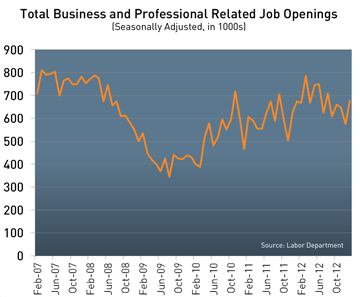When a factory is providing its maximum return on capital it is easy to see.
A third shift needs to be added, the loading dock is constantly nearing capacity
with product before the trucks come to take it away, and inputs are
arriving just in time to be put into production.
Return on human capital, though, requires a different perspective
and analysis because of how malleable that capital is. A hydroforming aluminum
press that is set up to manufacture parts of a monocoque automotive chassis
cannot put out a different product without significant retooling that could take
days. Humans are quite different. A senior in-house legal counsel can just open
a different document and suddenly be doing the work of a paralegal--yet at
several times the hourly cost. If this scenario were occurring regularly across
sales, marketing, development, and operations roles, everyone at the managerial
level would appear to be busy, working at capacity, yet the company would be
operating well below the potential return on capital.
"During the recession, asking people to absorb other roles and make do with
lower staffing levels helped to trim budgets and survive in lean times," says
Rob Romaine, president of MRINetwork. "Nearly three years after
the end of the recession, though, employers are hiring throughout their
organizations, and there are nearly 3.7 million current job openings."
The highest job opening rate is in the professional and business sector where
there is one job opening for every 27 workers currently employed, in contrast to
one opening for every 33 healthcare workers or one for every 50 construction
workers. Considering that the unemployment rate for management, professional and
related occupation professionals is 3.8 percent, or one in 26, the sector is
essentially near full employment.
"Maximizing your return on investment when it comes to professional talent
today isn't a matter of how lean you can run the organization, but rather
how effectively you are utilizing your top talent," notes Romaine. “This has
been one of the largest shifts in talent demand this year. Managers aren't just
looking at the capabilities they can add to their organization, but how to add
talent that will let their talent reach their highest potential,” says
Romaine.
While in a simple way this might mean freeing top producers of the
responsibilities that distract from them doing what they do best, Romaine says
it can also involve a more nuanced approach.
"A lone wolf could do amazing things, yet appear to be peaking in their
performance. By bringing in someone on a similar level but with a different
background, a manager can help to spark the rigorous debate and examination that
allows a once plateaued performer to continue to grow and do their best work,"
says Romaine.
When talking about an organization's top performers, though, the conversation
inevitably has to return to not just how to develop them, but how to retain
them. A recent survey by the American Management Association showed that more
than a third of employers are expecting turnover to increase in the coming year,
while less than 20 percent of those employers feel they are well prepared for
that turnover.
“Top talent is driven by success, their ability to have a positive impact on
their organization, and the potential to continue to grow," says Romaine.
"Building out teams that help top talent to grow is vital to increasing job
satisfaction at a time when finding experienced replacements is becoming
increasingly difficult. But helping your best people to work better also
directly improves your return on human capital.”

